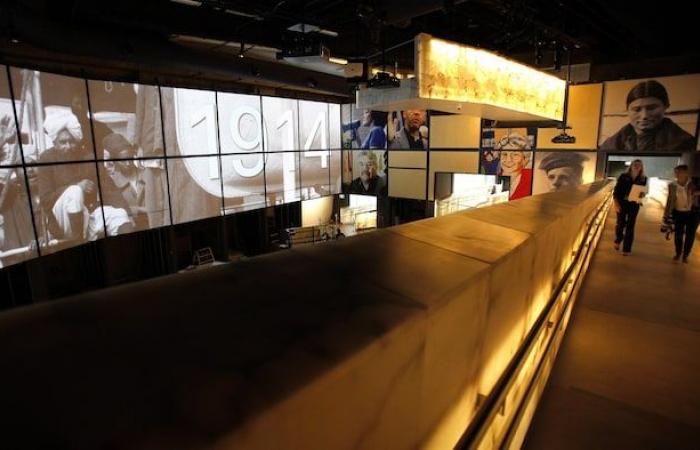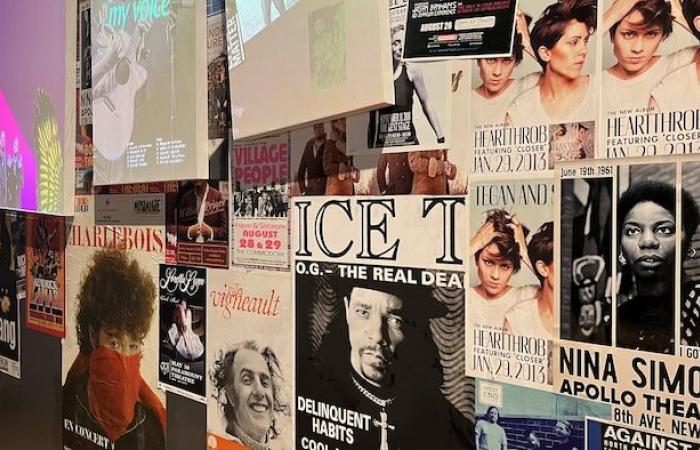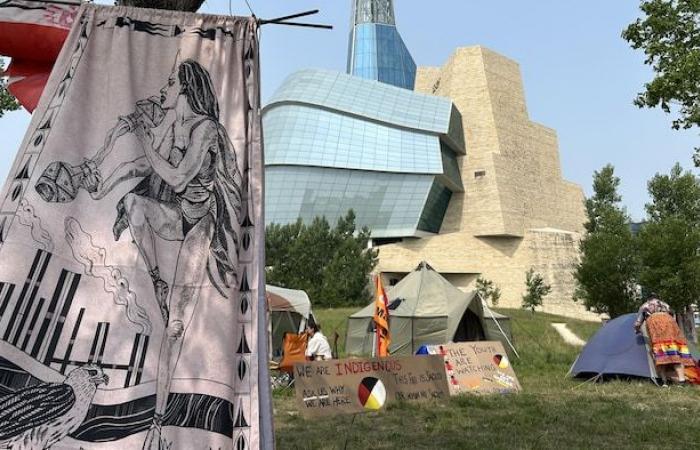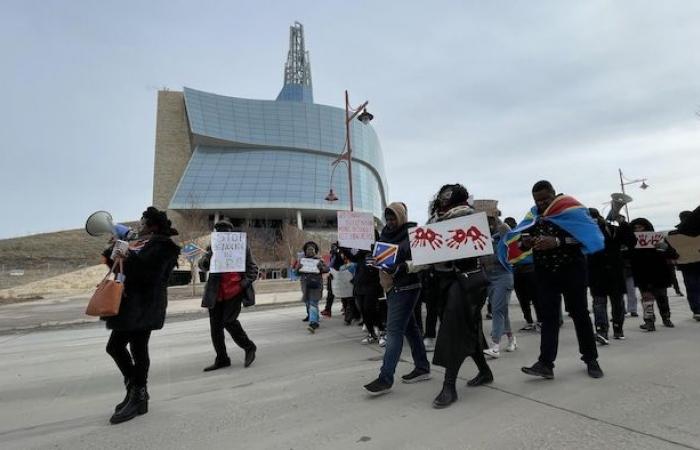In 10 years, society has changed. The Canadian Museum for Human Rights must take into account this changing reality, human rights that are being weakened or rights that are more present in social discourse so that its content remains relevant.
At its official opening on September 19, 2014, Indigenous groups demonstrated outside, including calling on museum officials to remember missing and murdered Indigenous women and girls. The museum’s handling of Ottawa’s policies regarding Indigenous peoples was also a source of debate.
In 2019, the Canadian Museum for Human Rights in Winnipeg changed its position on the treatment of Indigenous peoples in Canada, calling it genocide
rather than cultural genocide
.
Open in full screen mode
Isha Khan has been the Executive Director of the Canadian Museum for Human Rights since 2020.
Photo: Radio-Canada / Simon Deschamps
I am proud of the work we have done to better understand our relationships with the first peoples of this land through Elder-led ceremonies.
said the museum’s director general, Isha Khan.
It pushed us to look at human rights through an Indigenous lens. When I look back on what has been done over the last 10 years, it has been a real obstacle course. It is a journey that we are continuing today.
she said in an interview in early September.
We want to contribute to reconciliation, but we know that for the Museum it is even more important to contribute to establishing the truth. That is why we are very grateful to the people who tell us their stories.
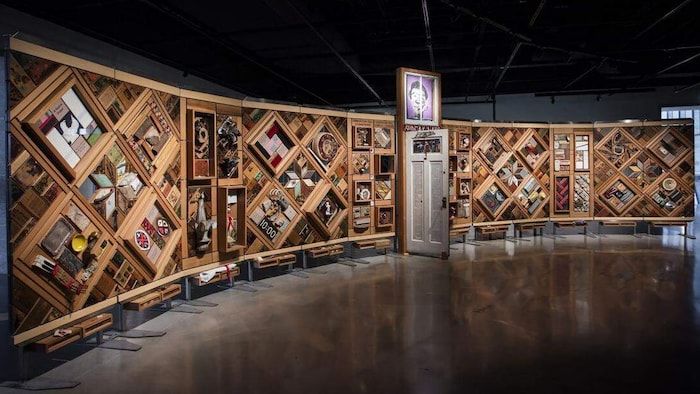
Open in full screen mode
Carey Newman’s 2014 work “The Witness Blanket” in memory of the victims of residential schools will be on permanent display at the Canadian Museum for Human Rights. (File photo)
Photo: Jessica Sigurdson/Canadian Museum for Human Rights
Professor of museology at the University of Quebec in Montreal, Jennifer Carter has extensively studied the case of MCDPShe visited in August and says it has adapted over the years.
We must be open to different perspectives on rights, therefore, precisely the place given to indigenous conceptions of rights, to traditions, to practices, to different anthologies, Western, but also indigenous and non-Western
she says.
Temporary galleries to keep you informed
Jennifer Carter says the museum’s greatest strength is sharing oral histories from groups affected by mass atrocities or abuses of power. She stresses that because it’s a human rights museum, it’s important to work with different communities. and especially minority communities
.
It takes time to build these bonds of trust with these different communities and to invite them to take ownership of the Museum, to work together to create exhibitions.
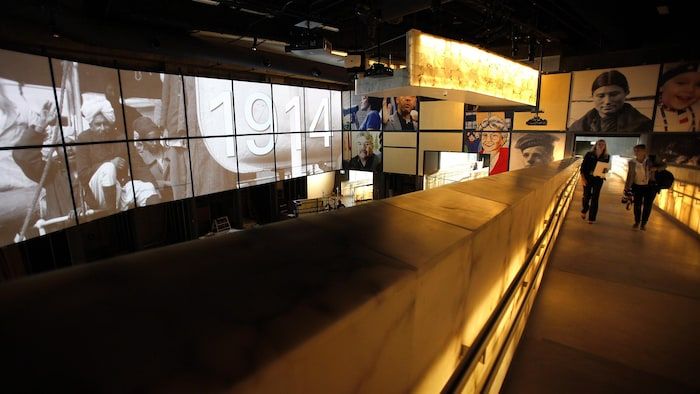
Open in full screen mode
Jennifer Carter says when the museum first opened, people came mainly to see the architecture, and the exhibits have improved over time. (File photo)
Photo: The Canadian Press / John Woods
While the permanent exhibits haven’t changed much, Carter notes that the museum is committed to using the right terminology as society evolves. He does not hesitate to do research to make corrections.
she emphasizes.
Museum Director Isha Khan says the institution’s mission has not changed in 10 years, to better understand human rights, to create a world where they are valued and to promote respect and dignity for all
.
Today, more than ever, we recognize that the Museum has a role to play in improving public understanding of human rights, so that we can understand some of the conflicts and global situations that exist in the world and contribute ourselves to improving the human rights situation in the world.
said Isha Khan.

Open in full screen mode
The temporary exhibition that combines music and human rights, “Loud and Strong: Music, Resistance and Change,” runs until September 29, 2024. (File photo)
Photo: Radio-Canada / Véronique Morin
According to Jennifer Carter, the temporary galleries allow the MCDP of monitor the evolving status of rights
and stay alert.
We can think of exhibitions on climate justice or racial justice, for example. We could also imagine exhibitions on justice for generations that have not yet been born.
she said. “The Museum […] aims to be a place to raise public awareness of the fragility of our democratic systems, the fragility of laws and rights. We must always fight to protect these achievements.
A museum that takes a stand
When it comes to human rights issues, the Museum does not hesitate to defend them on its social networks, even if the issue may be highly political.
So in November 2023, as pressure mounted in Ottawa for Canada to call for a ceasefire in the Gaza Strip, on X, the Museum wrote: We join those calling for the immediate release of all hostages and a lasting ceasefire that guarantees the security, peace and dignity of Palestinians and Israelis.
Canada finally voted in favour of a motion calling for a ceasefire at the United Nations on December 12, 2023.
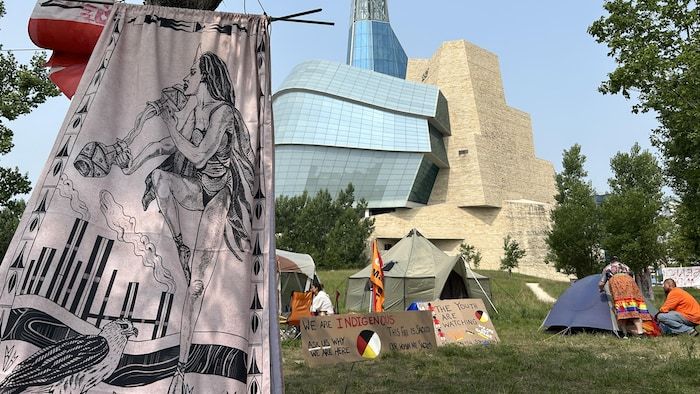
Open in full screen mode
Camp Marcedes was set up near the Canadian Museum for Human Rights in Winnipeg for several months. (File photo)
Photo: Radio-Canada / Gilbert Rowan
A few months earlier, in July, a Marcedes Myran memorial camp was set up on the grounds of the museum, with the approval of its management. Protesters were demanding that landfills be searched for the remains of victims of a Winnipeg serial killer.
Isha Khan is not afraid to take political positions, particularly because of the institution’s independence from the federal government as a Crown corporation.
She also explains that she is comfortable taking positions on human rights: It is our mission and vision to be a space where we can have discussions
for educational purposes.
A center of attraction for demonstrations
In addition to recent protests in support of the Israeli and Palestinian peoples, and for Indigenous peoples, many activists for other causes have used the grounds of the Canadian Museum for Human Rights to make their voices heard.

Open in full screen mode
In February 2024, the Congolese diaspora in Manitoba called for Canadian intervention to end the war in eastern Democratic Republic of Congo. (File photo)
Photo: Radio-Canada / Amine Ellatify
Isha Khan reminds that the Museum has a role to play in the community to be a place for reflection and dialogue
.
This museum is a symbol of human rights. We constantly see people wanting to take action for human rights, whether through protests, through reflections inspired by visiting our galleries, or simply through discussions among themselves or with our team.
explains Isha Khan.
The fight for human rights has no end in itself.



